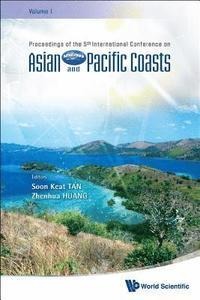
Liknande böcker
On modeling and numerical computation of industrial disperse two-phase flow with the Euler-Lagrange approach
Bok av Santiago Laín Beatove
In order to reliably predict technical and industrial processes, which frequently involve two- or multiphase flows, robust numerical methods as well as improved mathematical models are needed. However, such models are complex and not amenable of analytical solution, and they must be solved numerically adequately implemented in Computational Fluid Dynamics simulation tools. Therefore, validation of multiphase flow models is the key for new developments and advances in industrial processes and equipment. Besides, the overall flow structure and the integral relevant process parameters, e.g. pressure drop or separation efficiency, are strongly affected by the elementary processes occurring on the scale of the particles. As a consequence, a detailed modeling and validation of these micro-scale phenomena is required when anticipating reliable numerical predictions.The main objective of this work is the detailed validation of models of elementary processes occurring in turbulent two-phase flow against careful experiments, providing information of as many variables as possible. Some of these experiments have been initiated or performed in the Chair of Mechanical Processes of Martin-Luther Universität Halle-Wittenberg during the stay of the author, and others have been chosen from the open literature.From the numerical point of view, it can be said that the Euler-Lagrange approach is the most extended used for the calculation of dispersed dilute turbulent multiphase flows, which are the kind of flows in which this work is focused on. The dispersed phase is modelled by tracking a large number of representative point-particles through a previously computed flow field by solving the equations of motion accounting for all relevant forces acting on the particles and other important elementary processes. Local average properties such as dispersed phase density or velocities are obtained by ensemble averaging for each control volume in the computational domain. The effect of the dispersed phase on the continuous phase has to be accounted for by appropriate source terms in the Eulerian conservation equations, which also need to be sampled during the Lagrangian tracking. A converged solution is achieved by sequential calculation of Eulerian and Lagrangian part. An essential advantage of this method is that the discrete nature of the dispersed phase particles is retained. Moreover, physical effects influencing the particle motion (i.e. elementary processes), such as particle-turbulence interaction, particle-wall collisions or inter-particle collisions, can be modeled on the basis of physical principles. Additionally, a particle size distribution may be easily considered by sampling the size of the injected particles from a given distribution function.In this work, the turbulence of the continuous phase has been described through different models depending on the flow configuration. In stationary particle-laden flows the Reynolds Stress Model (version Launder-Reece-Rodi) has been used for two-dimensional computations while the k - e model has been employed in full three-dimensional simulations. In the case of time dependent three-dimensional bubbly flows the Large Eddy Simulation strategy has been chosen.This document is organised as follows. In the first chapter, a discussion about the industrial relevance of multiphase flow and the role of numerical models for optimising processes is given together with a summary of the main parameters describing a two-phase flow. In the second chapter, a summary of the grounds of the Euler-Lagrange approach is given, including a description of the relevant micro-processes, occurring at the scale of the particles, considered in this work. The third chapter is devoted to the introduction and evaluation of different stochastic particle-turbulence interaction models in several flow configurations. The fourth chapter presents a new formulation for describing the modulation of carrier phase turbulence due to
Visa pris inkl. frakt Inkl. frakt







